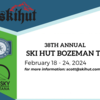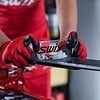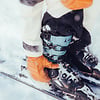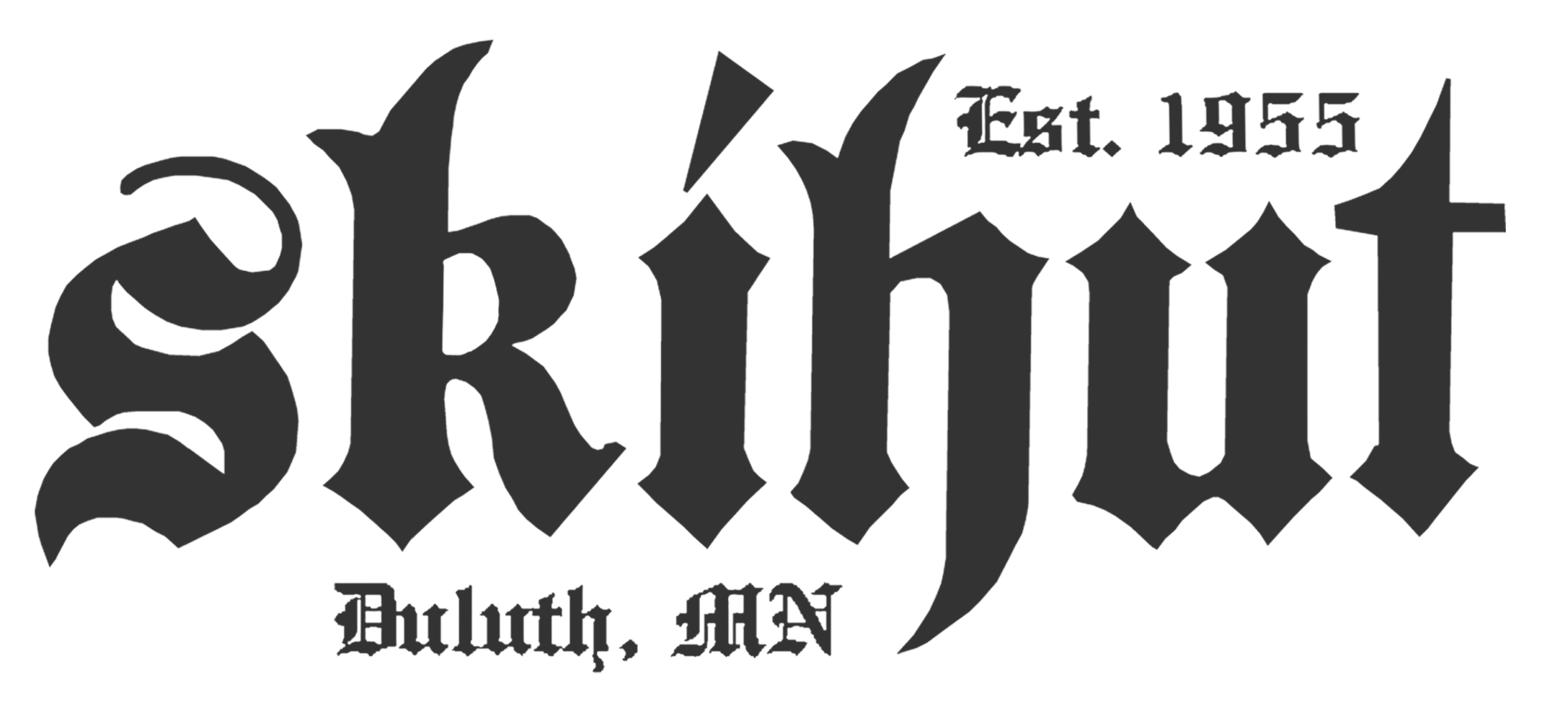Nordic | Crosscountry Ski Buying Guide
Nordic | Crosscountry Ski Buying Guide
What the Heck is Nordic?
At Skihut we stock Nordic skis fromAtomic, Fischer, OAC Finland, andSalomon.
Nordic, or Cross Country (XC), skiing encompasses a huge variety of skiing styles. To be considered “Nordic” the skiing style simply needs one thing - a “free” heel. If the heel of the foot is free to move up and down - it is considered Nordic skiing. Nordic skiing ranges from perfectly machine-groomed tracks for racing, to no grooming whatsoever, to lift-served “Telemark” skiing. While all of these styles reside under the same general banner, they all require very different equipment. In this article we will explain the basic differences in this equipment in relation to its intended use. Let’s kick it off with race skis.
Fast as Fast Can Be.
Nordic race skis are skinny. Really, really skinny. The widest portion on any Nordic race ski rarely exceeds 44mm. The general rule for any ski is: skinny is fast, wide is stable. The converse is also true: skinny is unstable, wide is slow.
What does this tell us? Basically, it tells us that a beginning Nordic skier shouldn't start out on a race ski and a racer probably doesn't want a tour ski. There are exceptions. Gifted athletes may take to a race ski rather easily. We would recommend that these individuals “demo” a ski first. By taking a ski out for a spin before buying, one can assess whether or not this ski will suit their intended purpose. Racers may occasionally want a wider ski for going where the groomers don’t (often) go. For this they will need a wider, more stable, and more durable ski. Hence, a tour ski. In-track (not backcountry) tour skis are generally between 46 and 62mm wide, and are often more durable than race skis.
Race skis are divided into two skiing techniques: Skate (freestyle) and Classic (traditional). Classic is the traditional technique. When utilizing Classic technique, the skier follows what look like little train tracks in the snow. The skis fit in these tracks and help to keep the skier going the intended direction. The actual technique is basically highly-modified walking, on skis, using poles.
Skate skiing is a relatively new technique - having been invented in the 1980’s. Skating is as it sounds. It resembles inline or ice skating. But, again, on snow and using poles. Skating requires a wide, firm track.
Every company makes a Skate ski and a Classic ski with the exact same name and price. The ski designated as “classic” will be about 10 cm longer (for more glide speed). It will be much softer under the foot (to engage grip on the snow). And it will have less torsional stiffness (to follow those little train tracks easier). The “skate” ski will be shorter (for easier handling). It will be stiffer under foot (for stability and explosive forward energy return). It will also have more torsional stiffness (also for stability and explosive forward energy return).
Here at Skihut, we are prepared to get as technical as you want to get about picking race skis. We have decades of experience on-snow and in-store. We have been around the world learning all of the in-depth race secrets from the designers, racers, engineers and race techs. We have friends and contacts who currently work on the World Cup. We know people. We know skis.
Now let’s talk about tour skis.
Tour - It’s What You Make Of It.
There are a thousand ways to “tour” on Nordic skis and there is a ski made for each of those thousand ways. “Tour” simply means “not race”. One can tour ski on amazingly well-groomed trails, barely groomed trails, or no trails at all. One can tour ski really fast, really slow, or any speed in between. This means that there are a lot of different looking, and performing, tour skis.
Tour skis are usually classic-style skis with a width of 46mm or more. Some relatively thinner skate skis are sometimes considered tour skis. These skate skis are usually between 44mm and 48mm in width and are limited to groomed trails and firm lake snow. They are also considerably slower, heavier, and less expensive than their racing counterparts.
Again - the general rule for any ski is: Skinny is fast, wide is stable - with the converse also being true: Skinny is unstable, wide is slow. Tour skis generally range from 48mm to 125mm in width. Skis between 64mm and 125mm are referred to as “backcountry” skis. They are too wide for a machine-groomed track. But they perform well in un-groomed snow. Experienced skiers will often prefer a narrower tour ski. These skis are nearly as fast as a race ski while having better stability and durability for varied terrain. This stability and durability is helpful when skiing on trails with little to no grooming. An inexperienced skier has a plethora of options. Which ski is the right one for them depends upon their skiing experience. Where they want to ski, and how they want to ski when they get there. Arriving at the best ski option requires a discussion with a ski expert at an experienced ski shop.
At this point we could launch into a multitude of scenarios of skier to ski relationships. But there are simply too many variables. Some skis are short. Some skis are long. Some skis are soft. Some skis are stiff. Some skis are cheap. Some skis are expensive. Some skis are waxless (there are several different types of “wax-less”). Some skis are wax-able (all skis are wax-able to a point). Skiers themselves are just as diverse. That is why the inexperienced skier needs to visit a knowledgeable ski shop. With the right questions and answers the process will not take long. But it is a process that requires thought and discussion. Any shop worth their beans will help the inexperienced skier select the right ski for them and for the experience they are hoping to enjoy.
Here at Skihut, we are all skiers. We love this sport. We want you to love it as much as we do. We want you to meet the goals that are in your mind. We want you to come back! Please feel free to stop in or call anytime to talk skis and skiing. We’re into it!
A Note on "Fish Scale" vs. "Skin" Skis.
"Fish scale" and "skin" are the two most common types of "wax-less" skis currently on the market ("wax-less" refers ONLY to the GRIP ZONE of the ski - ANY ski can benefit from some sort of glide-enhancing wax - especially in wet snow!) . "Fish scale" is the common term that most folks recognize as the tire-tread-like grip pattern on ski bases that sometimes looks like the scales of a fish. This type of wax-less grip has existed for many decades. FYI - "Fish scale" was actually a brand back in the 1970's. No current manufacturer actually uses the term anymore. The latest terminology would be "Crown", "Posigrip", or "G2". We only use "fish scale" because it resonates with most customers. "Skin" skis have a directional, replaceable, mohair-like grip zone on the base of the ski. "Skins" are, currently, all the rage!
If you are looking for a fast (efficient) ski with reliable grip that will be used on groomed trails primarily - you want a skin ski. Skins are much faster and have much better grip on groomers than fish scales do. There is really no comparison. If you will be doing a considerable amount of your skiing on ungroomed or soft snow - you want a fish scale ski. While fish scales don't have the same grip and glide of a skin on groomed trails, they do stay far more effective, predictable, and reliable when skiing soft snow. Skin ski performance drops off considerably when confronted with soft snow (If you have experience with Alpine Touring this statement may have you scratching your head. Trust us - these two styles of skinning are completely different). Grip all but disappears and glide may become "jerky". Skins can still be used in soft snow. As long as the skier knows what to expect it will be okay. They will, after all, be outside and skiing!


 Shop
Shop
 Service & Repair
Service & Repair
 38th Annual Ski Hut Bozeman Trip
38th Annual Ski Hut Bozeman Trip
 Wax Clinics
Wax Clinics
 Ski Hut Blog
Ski Hut Blog
